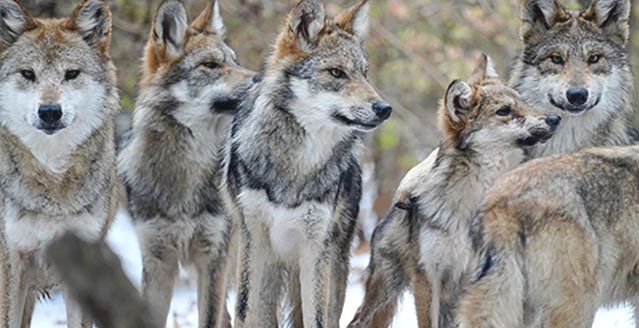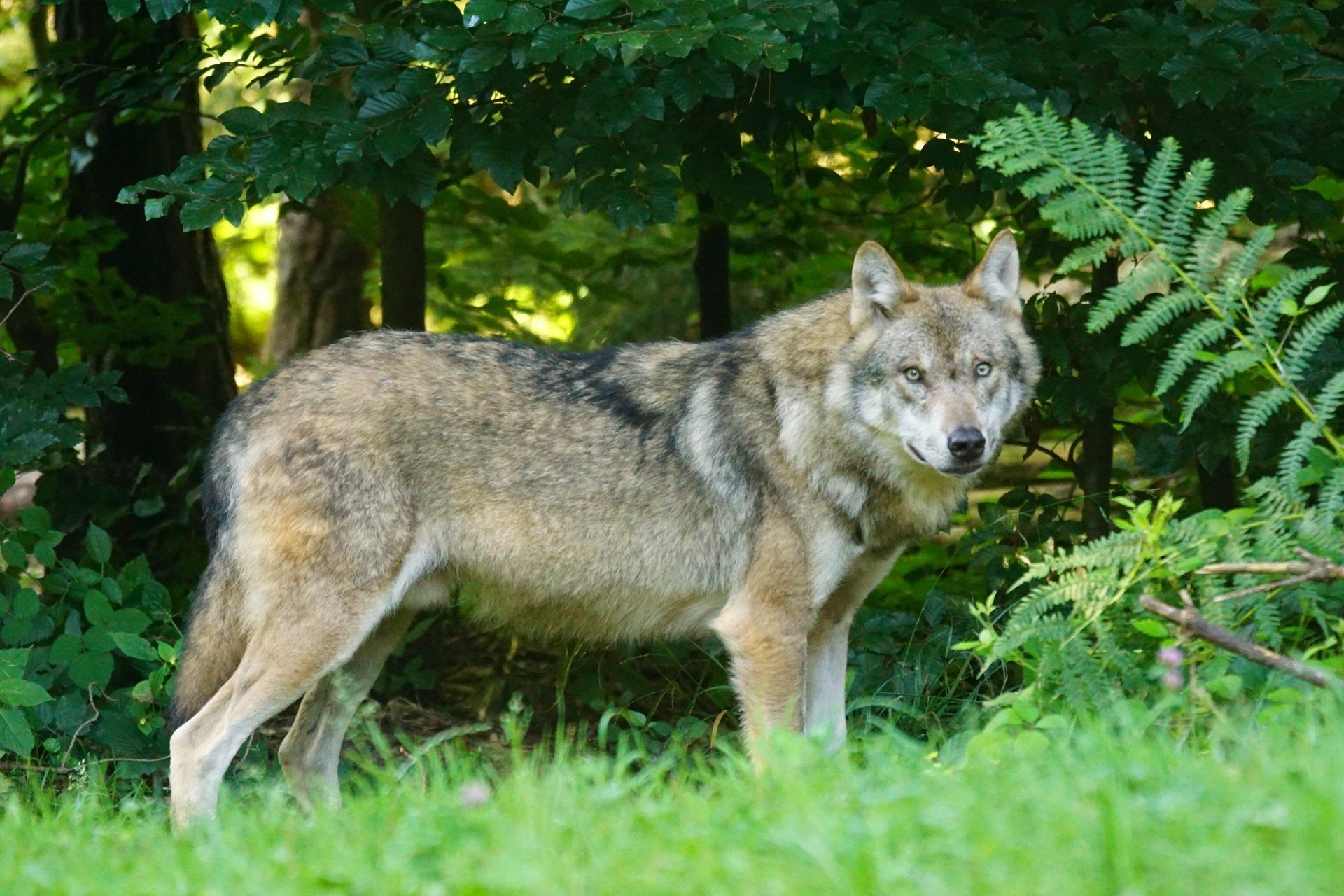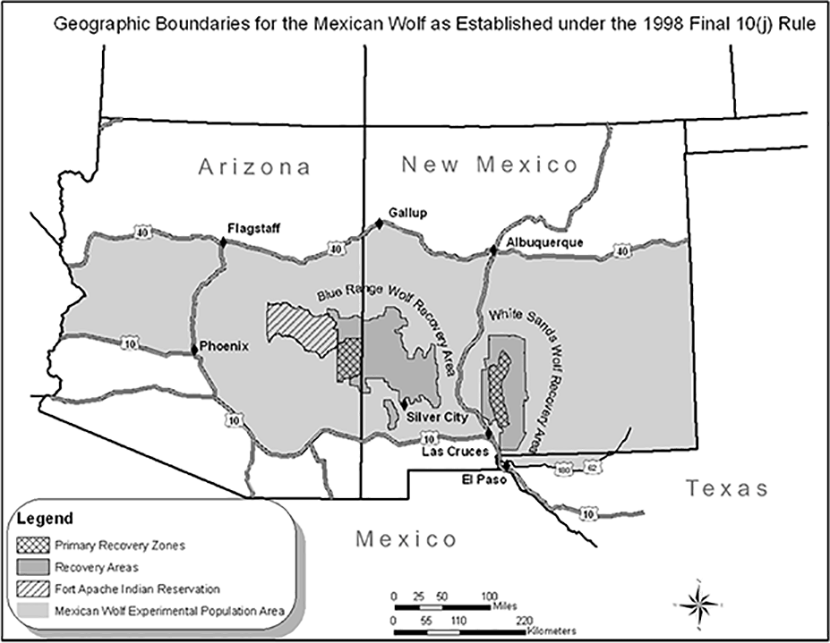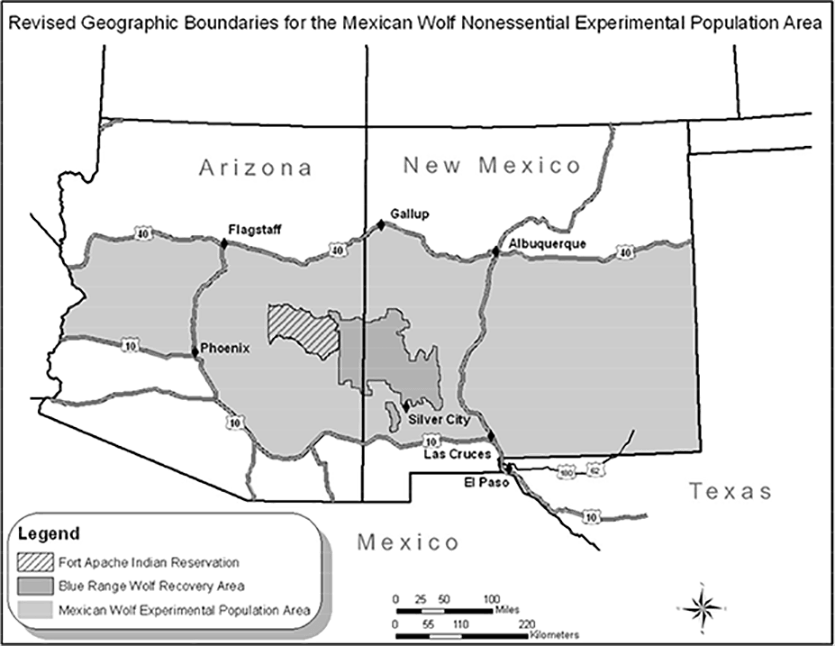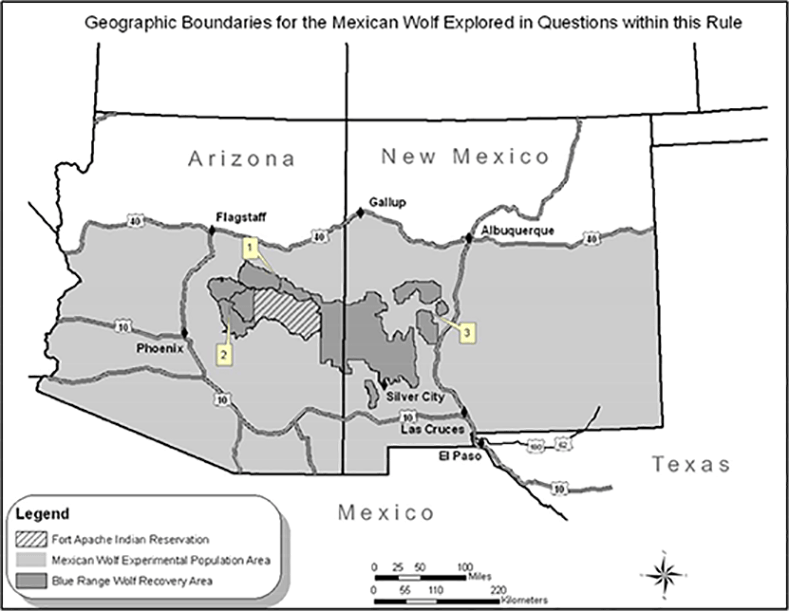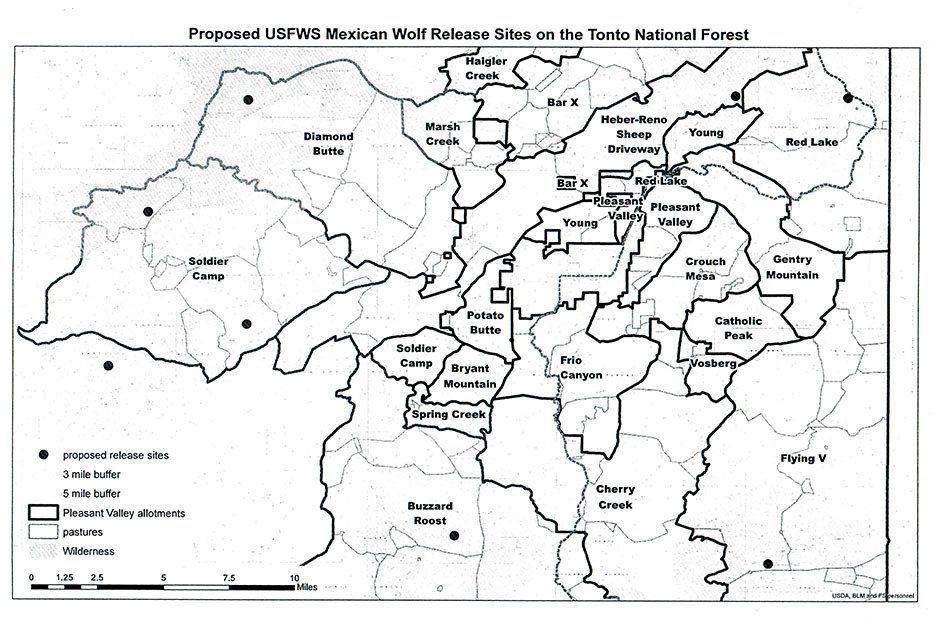Current Ag Issues Index Quick Links
Mexican Gray Wolf
Mexican Gray Wolf Facts
How to tell a wolf from a coyote...…..
- Wolves are adept at determining prey vulnerability and the human victims of predatory attacks tend to be mainly on children.
- Recent proposals place wolf release sites where elk and deer populations are very low, and permitted cattle, including calves, horses and dogs are present.
- Wolves may attack a dog even when people are present and a wolf excited by the presence of a dog may be more likely to act aggressively toward people.
- Aggressive behaviors by wolves are often associated with habitation and food conditioning. The wolves planned for release have been raised by humans in facilities where they are habituated and food conditioned.
It is sometimes hard to tell the difference between wolves and coyotes, especially from a distance.
Mexican Wolf Population Grows for Eighth Consecutive Year
March 5, 2024 Press Release
The wild population of Mexican wolves saw another year of growth in 2023, according to the results of the annual survey. The 2023 population census revealed a minimum of 257 Mexican wolves distributed across Arizona and New Mexico. This increase marks the eighth consecutive year of population growth, the longest continuous streak since recovery efforts began.
The 2023 population minimum count represents a six percent increase from the minimum of 242 wolves counted in 2022. Survey results show the population is distributed with a minimum of 144 wolves in New Mexico and 113 in Arizona.
Service Provides Final Supplemental Environmental Impact Statement to Assess Management Changes for Mexican Wolves
May 12, 2022: Albuquerque, NM
The U.S. Fish and Wildlife Service announced today the availability of a
final Supplemental Environmental Impact Statement (FSEIS) assessing the environmental impacts of revisions to the management regulations for the Mexican wolf in Arizona and New Mexico. The revised rule and Supplemental Environmental Impact Statement have been developed in response to a court-ordered remand of the 2015 10(j) rule by the District Court of Arizona.
The FSEIS analyzes the environmental effects of three alternatives to revising the existing nonessential experimental designation of the Mexican wolf in the Mexican Wolf Experimental Population Area (MWEPA) . . .
Related Topics
Click Links for Related Articles
-
Revision to the Regulations for the Nonessential Experimental Population of the Mexican Wolf (2015 Final Rule) - January 2015 Write a description for this list item and include information that will interest site visitors. For example, you may want to describe a team member's experience, what makes a product special, or a unique service that you offer.
List Item 1 -
Revision to the Regulations for the Nonessential Experimental Population of the Mexican Wolf; Correction- January 2015 Write a description for this list item and include information that will interest site visitors. For example, you may want to describe a team member's experience, what makes a product special, or a unique service that you offer.
List Item 2 -
Endangered Status for the Mexican Wolf (Final Rule)- January 2015 Write a description for this list item and include information that will interest site visitors. For example, you may want to describe a team member's experience, what makes a product special, or a unique service that you offer.
List Item 3 -
Frequently Asked Questions - Revised Mexican Wolf 10(j) Rule and Revised Listing- Updated January 12, 2015 Write a description for this list item and include information that will interest site visitors. For example, you may want to describe a team member's experience, what makes a product special, or a unique service that you offer.
List Item 4


